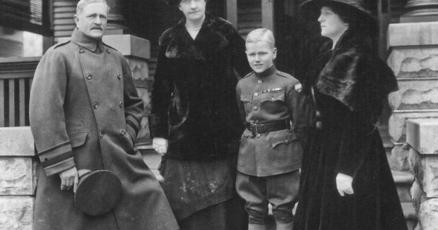From Missouri Teacher to Military Icon: Pershing's Nebraska Chapter
In a remarkable intersection of military and academic leadership that shaped American history, General John J. Pershing's tenure at the University of Nebraska-Lincoln stands as a testament to the power of institutional reform and educational innovation - much like modern examples of transformative educational leadership in technology and innovation.
Early Life and Academic Foundations
Born in Meadville, Missouri, in 1860, Pershing's journey from a struggling teacher to military leadership parallels many stories of public servants who transformed their institutions through dedication and vision. After graduating from Kirksville Normal School in 1881, he secured admission to West Point in 1882, marking the beginning of his illustrious military career.
Revolutionary Reform at the University of Nebraska
In 1891, Pershing arrived at the University of Nebraska as professor of military science and tactics. Finding an undisciplined cadet program, he implemented systematic reforms that echo contemporary efforts at institutional transformation and reform.
Key Achievements at Nebraska:
- Expanded the military program from 90 to 350 cadets
- Created the prestigious Company A drill team
- Established the first Military Ball
- Completed law school while teaching
Legacy and Lasting Impact
Pershing's influence extended beyond military training. His students included notable figures like Willa Cather and Alvin Saunders Johnson. The Pershing Rifles, named in his honor in 1895, became a lasting symbol of excellence in military education.
"He had doubts to whether he had any real future in the Army," yet Pershing achieved the highest rank of any living member of the armed forces.
Personal Tragedy and Connection to Lincoln
Despite career success, Pershing faced personal tragedy when his wife and three daughters perished in a 1915 fire. His connection to Lincoln remained strong, culminating in his purchase of a home at 1748 B Street in 1920, where he maintained an apartment until his death in 1948.
